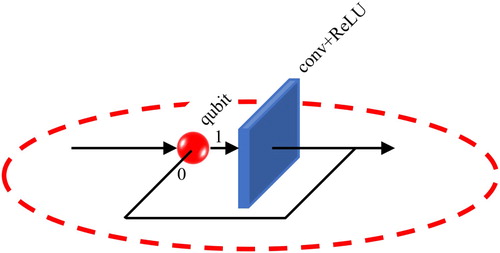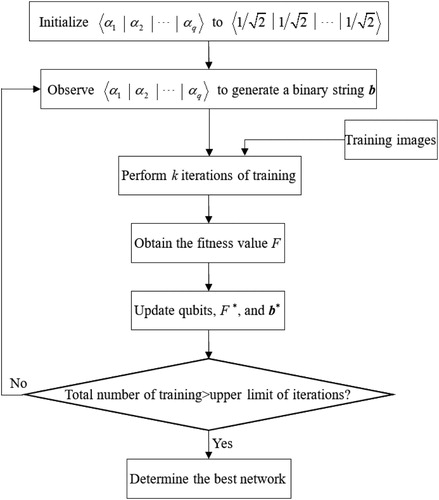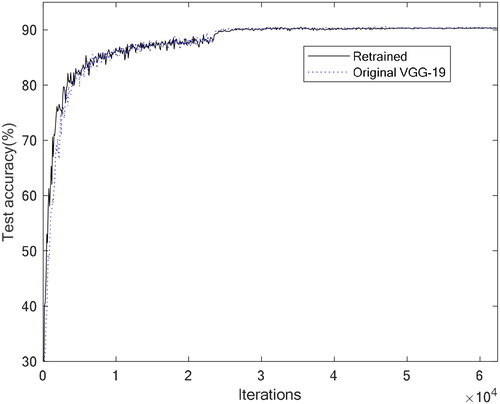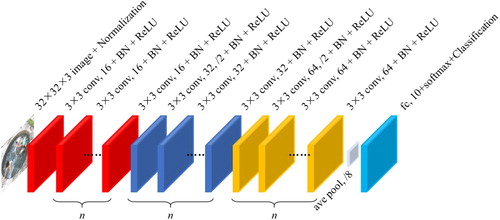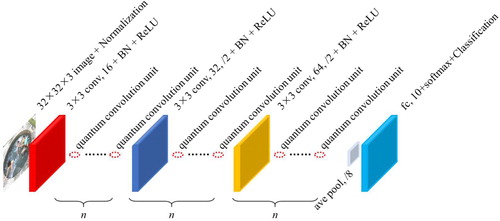Figures & data
Table 1. Probabilities of binary strings for qubit individual .
Figure 3. VGG-19 and quantum VGG-19 (“N×N conv, n + ReLU” represents a convolutional layer containing n N×N filters and a rectified linear unit, “max pool, /2” represents a max pooling with a stride of 2, and “fc, 10+softmax + Classification” represents a fully connected layers with a 10-class softmax output).

Table 2. Comparison of original VGG-19 and quantum VGG-19 (average result of 5 runs).
Table 3. Comparison of original CNN and quantum CNN (average result of 5 runs).


